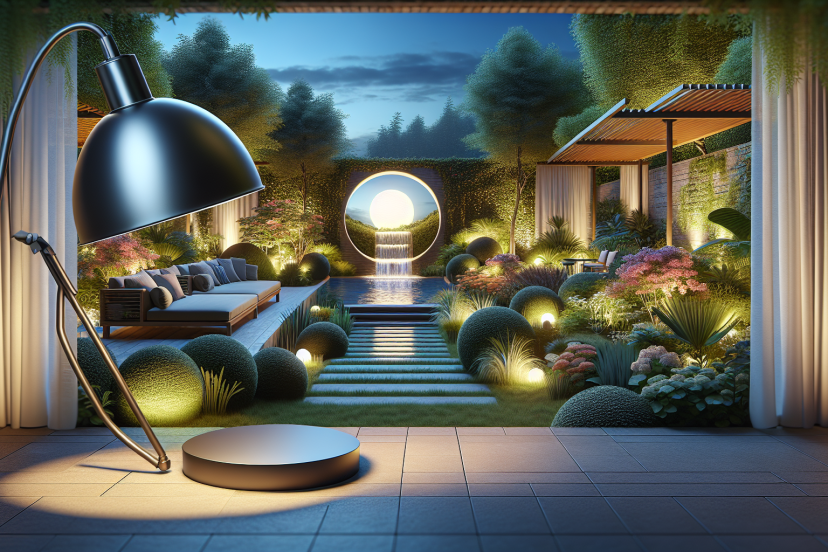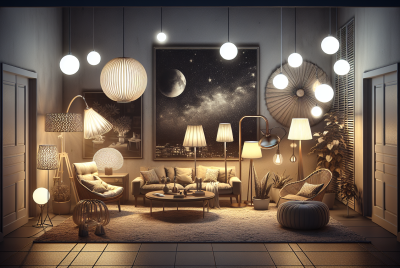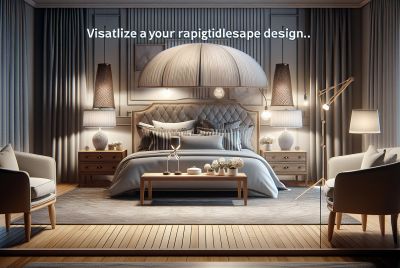Tips For Installing Outdoor Lamps In Your Garden Or Patio
Are you looking to enhance the ambiance of your garden or patio? Installing outdoor lamps can be a fantastic way to create a warm and inviting atmosphere. Whether you want to illuminate specific areas or create a soft glow throughout, this article will provide you with some helpful tips on how to install outdoor lamps in your garden or patio. From considering the right type of lighting to choosing the perfect location, these tips will guide you in creating an illuminated paradise right in your own backyard. So, get ready to transform your outdoor space into a charming oasis with these expert tips on installing outdoor lamps.
Choose the Right Type of Outdoor Lamps
When it comes to choosing outdoor lamps for your garden or patio, it’s important to consider the purpose they will serve. Are you looking for ambient lighting to create a cozy atmosphere, or do you need task lighting to illuminate specific areas? Understanding the purpose will help you narrow down your options and choose the right type of outdoor lamps.
In addition to the purpose, it’s also crucial to evaluate the design and style of the lamps. Outdoor lamps come in various shapes and sizes, so be sure to choose one that complements the overall aesthetic of your outdoor space. Whether you prefer a modern and sleek design or a traditional and rustic look, there are plenty of options available to suit your taste.
Another factor to consider is the power source for your outdoor lamps. You can choose between hardwired lamps that require professional installation and connection to your electrical system, or you can opt for solar-powered lamps that harness energy from the sun. Each option has its advantages, so weigh them carefully before making your decision.
Plan the Lighting Layout
After selecting the appropriate outdoor lamps, it’s time to plan the lighting layout for your garden or patio. Start by evaluating the size and shape of the space. This will help you determine where the lamps should be placed for optimal lighting coverage. Consider the various angles and perspectives from which the area will be viewed to ensure balanced lighting throughout.
Identifying key areas for lighting is the next step in planning the layout. Whether it’s illuminating a seating area, a pathway, or a specific garden feature, highlight these areas with strategically placed lamps. This will not only enhance the functionality and safety of your outdoor space but also create a visually appealing ambiance.
Layering the lighting is another essential consideration. By incorporating different types of lamps, such as wall sconces, post lights, and path lights, you can create depth and dimension in your garden or patio. This layering technique adds visual interest and enhances the overall lighting effect, making your outdoor space more inviting.
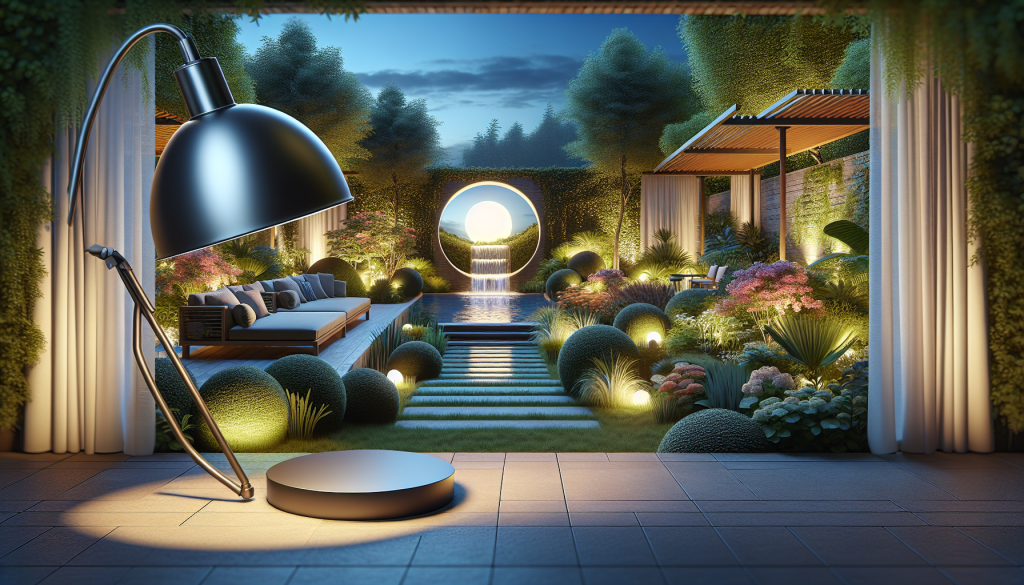
Consider Safety Measures
When installing outdoor lamps, it is crucial to prioritize safety. Ensuring proper wiring and connections is essential to prevent electrical hazards. If you are not confident in your electrical skills, it is best to hire a professional electrician to handle the installation. They will ensure that all wiring is done safely and up to code.
Additionally, choose weatherproof and durable materials for your outdoor lamps. Exposure to the elements can take a toll on lighting fixtures, so selecting materials that can withstand rain, wind, and UV rays is crucial. Look for lamps made from corrosion-resistant metals or durable plastics that are specifically designed for outdoor use.
Installing ground fault circuit interrupters (GFCI) is another safety measure to consider. GFCI outlets and breakers protect against electric shock by detecting imbalances in electrical currents. These devices are mandatory in outdoor areas and help ensure the safety of you and your family.
Select the Appropriate Bulbs
When it comes to selecting bulbs for your outdoor lamps, there are a few factors to consider. Evaluating the brightness and color temperature will help you achieve the desired lighting effect. Brightness is measured in lumens, so choose bulbs with sufficient lumens to adequately illuminate the area. Color temperature refers to the warmth or coolness of the light. Warm white tones (2700-3000K) create a cozy atmosphere, while cool white tones (4000-4500K) are better suited for task lighting.
Choosing energy-efficient LED bulbs is highly recommended for outdoor lighting. LED bulbs are not only energy-saving but also have a longer lifespan compared to traditional incandescent bulbs. They produce less heat, making them safer for outdoor use and reducing the risk of fire hazards.
If you prefer the flexibility of adjusting the lighting intensity, consider bulbs with dimming options. These bulbs allow you to create the perfect ambiance for any occasion, whether it’s a relaxing evening on the patio or a vibrant outdoor gathering.
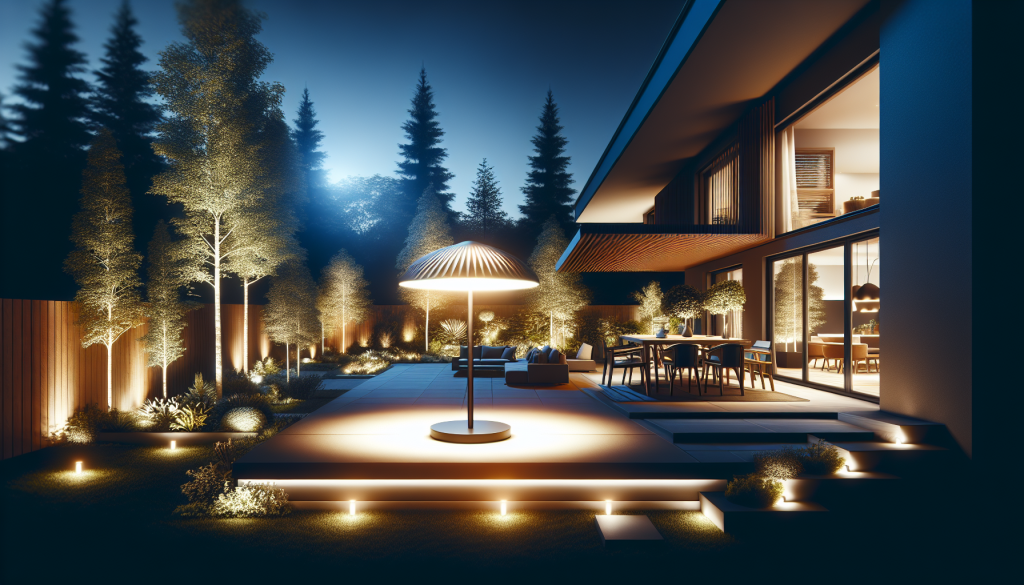
Install Outdoor Lighting Controls
To enhance the functionality and convenience of your outdoor lamps, investing in outdoor lighting controls is a wise choice. Motion sensors can be installed to automatically turn on the lights when someone enters the area. This is not only practical but also adds an extra layer of security to your outdoor space.
Timers and photocells are other control options to consider. Timers allow you to set specific times for your outdoor lamps to turn on and off, while photocells automatically adjust the lighting based on the natural light levels. These controls ensure that your outdoor space is well-lit when needed and conserves energy when not in use.
If you’re into smart home technology, you can integrate your outdoor lamps into your smart home system. This allows you to control the lights remotely through your smartphone or voice commands, giving you full control and flexibility over your outdoor lighting.
Position the Lights Properly
Properly positioning the outdoor lamps is crucial to ensure the desired lighting effect while avoiding glare and shadows. Illuminate walkways and stairs to provide safe passage during the evening hours. Position lamps at regular intervals along the path to create a well-lit and inviting walkway.
Highlighting key features or focal points in your garden or patio adds visual interest and draws attention to specific areas. This could be a beautiful flower bed, a centerpiece fountain, or a stunning sculpture. Experiment with different angles and positions to find the optimal lighting direction that enhances the beauty of these features.
While it’s essential to provide sufficient lighting, it’s equally important to avoid glare and shadows. Glare can be avoided by using shields or diffusers on your lamps to direct the light where it’s needed without blinding anyone. Shadows can be minimized by positioning the lamps strategically, taking into account the surrounding objects and structures.
Prepare the Installation Area
Before installing the outdoor lamps, it’s crucial to prepare the installation area to ensure a smooth process. Clearing vegetation and debris from the area not only makes it easier to work but also reduces the risk of fire hazards. Trim overgrown branches and remove any leaves or debris that may obstruct the installation process or interfere with the lighting effect.
Marking the locations for installation is the next step. Use stakes or markers to indicate where each lamp will be placed. This helps visualize the layout and ensures that the lamps are installed in the desired positions. Double-check the measurements and adjust as necessary to achieve the best lighting coverage.
Finally, gather the necessary tools and equipment before starting the installation process. Common tools that may be needed include a shovel or spade for digging trenches, a drill for installing fixtures, wire cutters and strippers for working with electrical wiring, and a ladder for accessing higher areas. Having these tools on hand will make the process more efficient and save you time and frustration.
Dig Trenches for Wiring
If you opt for hardwired outdoor lamps, you will need to dig trenches to route the wiring. It’s important to determine the best routing for the wiring to minimize visible wires and maximize the safety and functionality of the system. Consider the layout of your outdoor space and plan the routing accordingly.
Digging trenches at the appropriate depth is crucial for protecting the wiring. The National Electrical Code (NEC) recommends burying direct-burial cables at a depth of at least 18 inches. However, local codes may vary, so it’s essential to check with your local authorities for specific depth requirements.
Ensuring proper conduit for protection is another important consideration. Conduit encloses and protects the wiring, preventing damage from external factors such as moisture or accidental digging. PVC conduit is commonly used for outdoor lighting installations due to its durability and resistance to the elements.
Install and Secure the Outdoor Lamps
Now it’s time to install and secure the outdoor lamps in their designated locations. It’s important to carefully follow the manufacturer’s instructions to ensure proper installation and operation. Improper installation may lead to malfunctions or safety hazards, so take the time to understand the instructions before proceeding.
Ensuring stable mounting and fixing is crucial for the longevity and stability of the outdoor lamps. Make sure that the lamps are securely fixed to the ground or mounting surface to prevent them from being knocked over by strong winds or accidental bumps. Tighten any screws or brackets as per the manufacturer’s recommendations to ensure a secure fit.
Before finalizing the installation, it’s essential to test the lamps. Turn on the power and verify that each lamp is functioning correctly. Check the brightness, color temperature, and any additional features such as dimming options or motion sensors. This step ensures that everything is in working order before wrapping up the installation process.
Connect and Verify the Wiring
Once the lamps are securely installed, it’s time to connect and verify the wiring. Ensure correct connections and polarity by following the electrical system diagram provided by the manufacturer. This step is crucial for proper functionality and safety, so double-check each connection before moving forward.
Using waterproof connectors and junction boxes is essential to protect the wiring from moisture and outdoor elements. Make sure to use connectors and boxes that are specifically designed for outdoor use and rated for the appropriate environment. This ensures that the connections are secure and well-protected, preventing any potential electrical hazards or malfunctions.
After connecting the wiring, it’s important to test it for functionality. Turn on the power and verify that all lamps are powered and responding as intended. Walk around the area and check for any flickering or issues with individual lamps. It’s better to catch and fix any problems early on rather than discovering them later when it’s more challenging to make changes.
Installing outdoor lamps in your garden or patio can enhance the beauty, functionality, and safety of your outdoor space. By choosing the right type of lamps, planning the lighting layout, considering safety measures, selecting appropriate bulbs, installing outdoor lighting controls, positioning the lights properly, preparing the installation area, digging trenches for wiring, installing and securing the lamps, and connecting and verifying the wiring, you can create a captivating outdoor environment that you can enjoy all year round. So go ahead, get creative, and transform your garden or patio with the perfect outdoor lighting.

